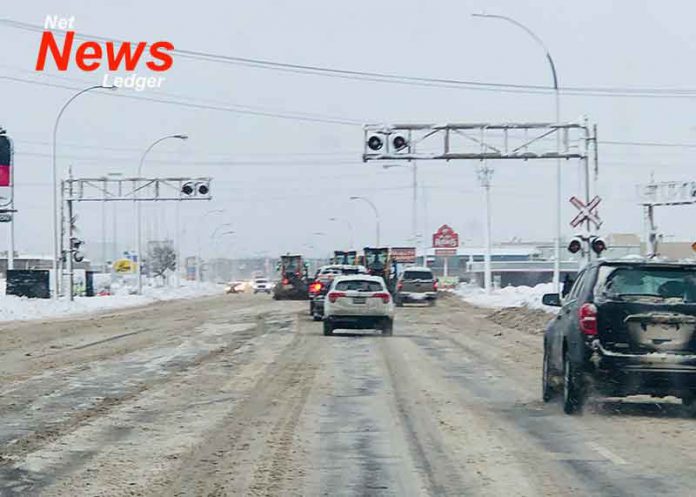Thunder Bay – NEWS – Now that the first blast of winter has blanketed the city, the question is did you remember how to drive on snow and ice?
Ontario’s winter weather can be very challenging at times, often exposing drivers to a wide range of weather and road conditions that can change drastically in a matter of hours. And as a driver, it’s best to be prepared for whatever Mother Nature throws your way!
Begin thinking about winter driving before the snow falls. Likely today, there are some procrastinators out there who didn’t have their windshield washer fluid topped up, had old wiper blades on the windshield wipers, and had to pull a card out of their wallet to scrap their windows.
Getting your vehicle winter-ready starts with a maintenance inspection to make sure your vehicle is in safe operating condition.
One of the best investments you can make to prepare your vehicle for winter driving is to install four winter tires. While all-season tires may be adequate in some areas of the province, they are not made for driving in snowbelt regions and throughout the north. Winter tires will provide greater stability and control of your vehicle and will help to reduce stopping distances in slippery driving conditions through snow, slush and ice.
Before you hit the road, check weather and travel conditions and don’t take chances if the weather is bad. Download the free Ontario 511 mobile App that provides real-time highway conditions and traffic information.
Look far ahead when you drive so you can recognize hazards in advance and have plenty of time to respond. Adjust your driving to current weather and road conditions and reduce your speed when the roads are slippery or slushy. Remember that bridges and overpasses freeze more quickly and stay frozen longer and black ice on the road can cause your vehicle to suddenly lose control.
Think of this, on ice and snow it takes longer to get rolling, and longer to stop.
Punching down on the gas to start only means you are going to spin your wheels. Same thing slamming on the brakes to stop.
Take the time to start slowly, drive to the conditions, and make sure you keep extra distance between you and the vehicle ahead of you.
Keep your vehicle full of fuel while travelling, road closure may cause motorists to remain stopped on the highways for several hours. It’s best to carry a winter survival kit with you while travel, which may include: extra clothing, winter boots, blankets, non-perishable foods, phone charger, and a candle with waterproof matches, which can help heat the interior of your vehicle if it stalls or you become stranded.
If winter driving conditions make you nervous, uncomfortable or fearful when you’re behind the wheel, stay off the road unless your trip is absolutely necessary.

